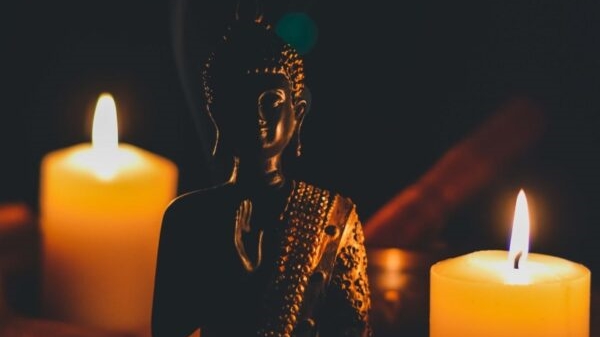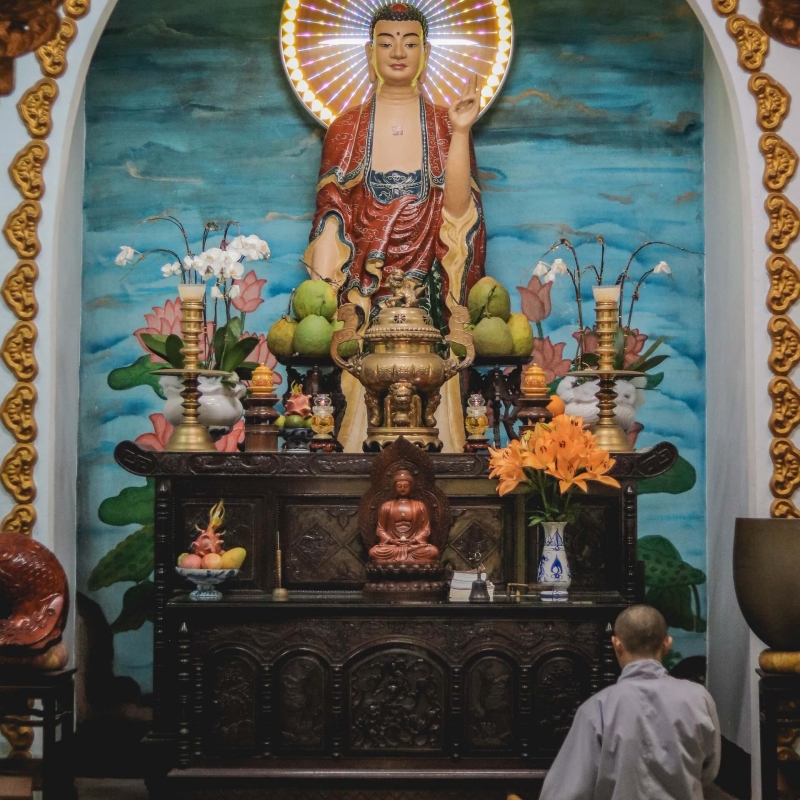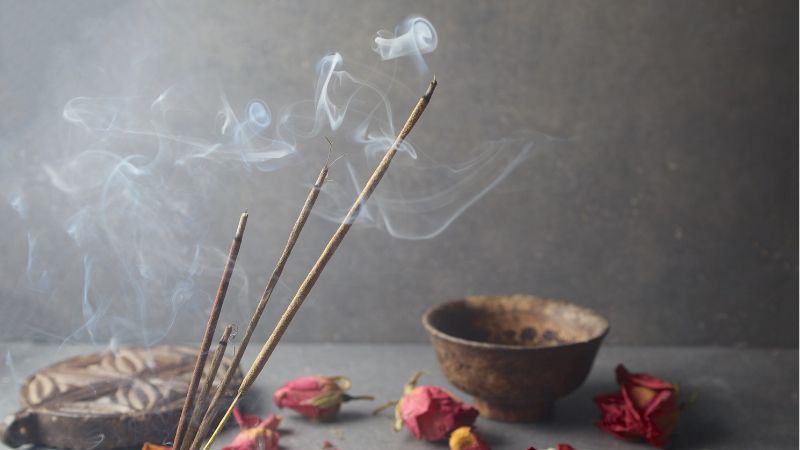
How to Burn Incense Sticks Safely?
Incense sticks, often associated with rituals and spiritual practices, are also popularly used around the world for creating an inviting, calm atmosphere at home or

The Chan Sect Buddhism, also known as Chán Buddhism, is a branch of Mahayana Buddhism that originated in China during the Tang dynasty. The Chan Sect emphasizes meditation, personal insight, and direct experience of “awakening” or enlightenment.
An important part of The Chan Sect practice is the use of various sensory experiences, including aromas, to help calm the mind and facilitate meditation.
This blog post will explore the role that aroma plays in The Chan Sect Buddhism as a tool to achieve enlightenment.

The use of incense and fragrant plants has long been an integral part of Buddhist practice and worship. Early Buddhist texts like the Pali Canon describe the burning of incense to create pleasant aromas during ceremonies and meditation. In China, incense was used in Daoist and Confucian rituals which influenced early Chan Sect practitioners.
When The Chan Sect Buddhism developed in China, it continued the use of incense and added new aromas like tea and flowers. Japanese The Chan Sect further expanded the role of aroma by using fragrances like pine, cypress, and cedar in ceremonial spaces. The goal was to create an atmosphere that promoted inner reflection.
In Chinese, The Chan Sect, burner systems were developed to heat and diffuse incense during meditation sessions. Important Buddhist temples began growing their own incense materials and processing them on-site.
Tea also took on greater spiritual significance, with the drinking of tea becoming an opportunity for mindfulness. Japanese The Chan Sect incorporated an even wider range of natural scents into religious activities.
Unique incense blends were formulated along with essential oils for anointing the body.
The Chan Sect teaches that enlightenment can arise from direct experiential insight into the nature of things. Meditation is the main method used to cultivate this insight. The Chan Sect employs aromas during meditation for several important reasons:
There are many specific aromas used in The Chan Sect practice. Here are some of the most common and why they are significant:

The Chan Sect employs sensory-based activities involving aroma to deepen meditation and insight. Some common practices include:
Different The Chan Sect temples and monasteries often produce their own proprietary incense formulas that become integral to their ritual and aesthetic traditions. Temples in Kyoto and Nara are especially renowned for their daily use of incense blended on-site by monks trained in the art of incense-making.
Raw ingredients like wood shavings, resins, flowers, roots, leaves and essential oils are combined according to precise recipes perfected over centuries. The procedures, measurements and materials used constitute unique incense styles and fragrances associated with each temple.
Popular bases for incense include sandalwood, agarwood, clove, cinnamon, Japanese cypress, and charcoal. These are then blended with ingredients like vanilla, ginseng, pine resin, lotus, rose, ginger, patchouli, frankincense, and benzoin.
Hundreds of specialized formulas have been developed. Monks have apprenticed for years to master the subtle intricacies of scent balancing and the religious symbolism of each ingredient.
Many of the natural aromas utilized in The Chan Sect practices have documented physiological and psychological benefits:
Modern neuroscience research is now demonstrating how scent exposure affects brain function and behavior. Studies show that odors are processed by the limbic system, the emotional center of the brain.
This causes aromas to evoke memories, influence moods and trigger relaxation responses. The incense used in The Chan Sect alters brain wave patterns by increasing alpha waves associated with wakeful calm.
Scent molecules also stimulate the release of neurotransmitters like serotonin, which improve focus and concentration. Consequently, The Chan Sect’s use of fragrance assists practitioners in entering meditative states by acting upon the brain.

While incense is the most common aroma in The Chan Sect, flower symbolism also features prominently in spiritual art and poetry. Paintings and verse use floral imagery to convey Buddhist concepts about the nature of existence. For example:
By meditating on the meanings behind these flowers, practitioners internalize core Chan Sect principles.
For The Chan Sect Buddhism, aroma is an important sensory tool on the path to enlightenment. The deliberate use of fragrances creates an environment conducive to meditation and allows practitioners to become fully immersed in the present moment.
The special scents used in The Chan Sect also have symbolic meaning and the rituals surrounding them help calm the body and mind. Through its aromatherapy traditions, The Chan Sect employs multiple senses and approaches in order to best perceive one’s true nature and attain awakening.
The natural aromas themselves also confer a range of benefits that support physical, mental and spiritual well-being. Ultimately, smell plays a vital role in The Chan Sect’s teachings and methodology for achieving liberation.


Incense sticks, often associated with rituals and spiritual practices, are also popularly used around the world for creating an inviting, calm atmosphere at home or

An incense fountain can be a beautiful addition to any home or office. The soothing sound of trickling water combined with the aromatic scent of

Meditation is an invaluable practice for reducing stress and attaining inner peace. While meditation’s benefits are profound on their own, tools like backflow incense burners

Incense has been an integral part of spiritual practice in The Chan Sect Buddhism for centuries. The burning of incense represents the ephemeral nature of

Incense sticks, often associated with rituals and spiritual practices, are also popularly used around the world for creating an inviting, calm atmosphere at home or

An incense fountain can be a beautiful addition to any home or office. The soothing sound of trickling water combined with the aromatic scent of

Meditation is an invaluable practice for reducing stress and attaining inner peace. While meditation’s benefits are profound on their own, tools like backflow incense burners

Incense has been an integral part of spiritual practice in The Chan Sect Buddhism for centuries. The burning of incense represents the ephemeral nature of
Copyright © 2024 burnwaterfallincense. All Rights Reserved.